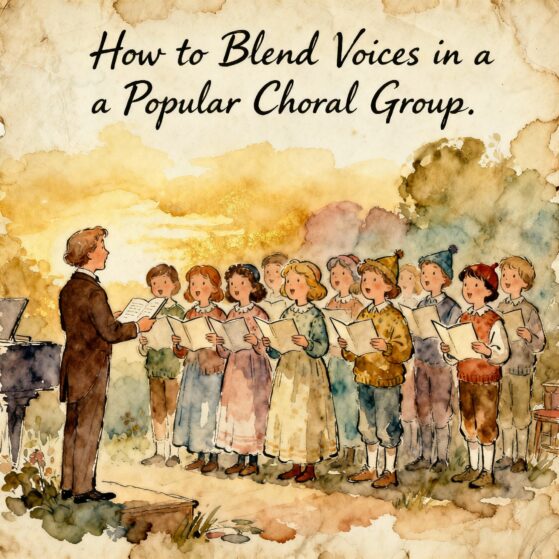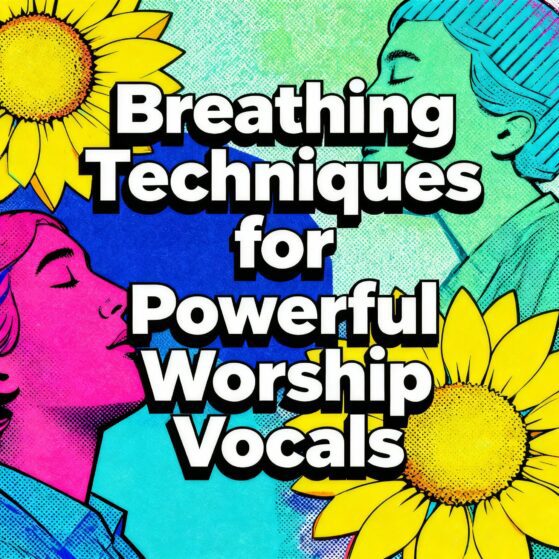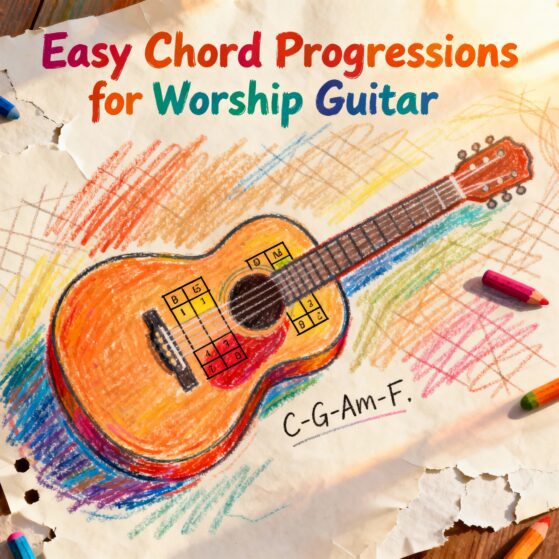Sing with Soul | Mastering Jazz, Blues, and Gospel Vocals
When you hear the rich timbre of a jazz vocalist, the raw power of a blues singer, or the uplifting energy of a gospel choir, what immediately stands out is something intangible yet unmistakable — they sing with soul. This quality goes beyond mere vocal technique; it breathes life into notes and phrases, transforming sound into a deeply emotional journey. But what exactly does it mean to sing with soul? How can a singer cultivate this profound connection between voice and feeling? Moreover, how do these genres — jazz, blues, and gospel — uniquely channel emotion, and what valuable lessons do they offer aspiring vocalists aiming for authentic expression?
In this blog, we will embark on a detailed exploration of these genres by understanding their emotional essence, vocal techniques, and cultural roots. By weaving together history, technique, and heartfelt expression, you’ll discover how to infuse soul into your singing and truly connect with your audience.

What Does It Mean to Sing with Soul?
Before diving into each genre, it’s important to first define what “singing with soul” truly means. Soulful singing goes beyond hitting the right notes or displaying technical skill. Instead, it becomes an emotional journey — one that demands vulnerability, honesty, and a deep connection with both the music and the listener. It’s about telling a story, often woven with threads of struggle, hope, love, or faith, in a way that resonates far beyond the surface.
This concept is deeply rooted in the African-American musical tradition, from which jazz, blues, and gospel emerged. In these genres, singing with soul became more than artistic expression — it served as a means of healing, of resistance, and of reclaiming identity. As a result, every soulful note reflects life’s hardships and victories. It invites both singer and listener into a shared emotional space. To sing with soul, then, is to open your heart and let your emotions speak clearly through your voice.

Jazz Vocals | The Art of Emotional Freedom and Sophistication
Jazz vocal music is often seen as the epitome of expressive freedom. Unlike many other styles, it doesn’t rely on fixed phrasing or rigid structure. Instead, jazz embraces improvisation as a core element — creating a natural flow between singer and band. This results in a spontaneous dialogue, where each performance feels fresh, personal, and unique.
Emotional and Musical Characteristics
Jazz singers use phrasing, timing, and tonal nuance to create emotion. They bend and stretch notes, play with syncopation, and use subtle vibrato to paint their emotional landscape. The ability to “swing” — to play with rhythmic tension and release — adds a fluid, conversational feel to their singing.
Techniques to Develop Jazz Soulfulness
Phrasing with Intention: Instead of singing exactly as written, jazz vocalists phrase melodies in a way that feels conversational and personal. This might mean delaying a phrase slightly or emphasizing unexpected syllables. Learning to manipulate timing creates emotional tension and release.
Scat Singing and Improvisation:
Scat is a form of vocal improvisation that uses nonsense syllables to create spontaneous melodies. Rather than focusing on lyrics, it emphasizes rhythm, phrasing, and tone — allowing the singer to communicate emotion purely through sound. By mastering scat, you begin to treat your voice like an instrument, gaining the freedom to explore musical ideas and emotional expression without the need for words.
Dynamic Control and Tone Variation: Jazz vocals often involve smooth tone shifts and dynamic contrasts — from whispery softness to full-bodied warmth. Mastering this control helps express the full spectrum of feelings.
How to Cultivate Jazz Soul in Your Singing
To sing jazz with soul, first immerse yourself in the greats like Billie Holiday, Ella Fitzgerald, and Chet Baker. Pay close attention to how their interpretations vary even when singing the same songs — it’s precisely their personal emotions and unique experiences that make each version unforgettable. Then, practice improvising over chord changes, and make it a habit to record yourself regularly. Finally, take time to reflect on whether your singing conveys a meaningful story or simply replicates the notes.

Blues Vocals | The Voice of Raw Emotion and Authenticity
If jazz is the language of sophistication and freedom, then blues speaks the language of raw emotion and unfiltered truth. While jazz invites the listener into a world of harmonic complexity and improvisational elegance, blues pulls you into the depths of human experience with a voice that aches, growls, and cries.
Blues didn’t arise in isolation — it emerged organically from the harsh realities of African-American life in the post-slavery South. Rooted in work songs, spirituals, field hollers, and lamentations, blues vocals carry the heavy burden of generational pain and personal sorrow, yet they also pulse with a fierce resilience and enduring hope. It is music that mourns, but never surrenders — music that expresses hardship, while always keeping an ember of defiance alive.
Emotional and Musical Characteristics
Blues singing is characterized by expressive vocal techniques such as vocal bends, growls, and slides that create tension and release. The use of blue notes — flattened or “bent” notes — adds a haunting quality that captures complex emotions. Unlike polished singing styles, blues celebrates vocal imperfections that reveal real feelings.
Techniques to Develop Blues Soulfulness
Mastering Blue Notes: Learn how to intentionally “bend” notes by sliding between pitches or lowering the third, fifth, or seventh scale degrees. This adds emotional color and tension.
Adding Vocal Texture: Grit, growls, and raspy tones are not signs of vocal damage here — they’re tools to convey vulnerability and grit.
Storytelling Through Emotion: Blues is deeply narrative. To sing blues with soul, connect with your personal stories of joy or pain and let your voice convey that truth.
Call and Response: Blues singers often engage in call-and-response with their instruments or audience, adding a conversational, intimate layer to the performance.
How to Cultivate Blues Soul in Your Singing
Begin by listening to legends like B.B. King, Etta James, and Muddy Waters. As you listen, pay close attention to how their voices waver and break — not by accident, but by intention. These subtle choices are what give the blues its emotional weight. Notice, too, how they hold certain notes just a little longer, stretching time to deepen the feeling. Every pause, every slide, every rasp is purposeful. So when you sing, don’t shy away from the cracks or rough edges in your voice. Instead, embrace them — because in the blues, that rawness isn’t a flaw; it’s the very heart of authenticity.

Gospel Vocals | The Power of Faith, Community, and Spiritual Expression
Gospel music is more than just a musical style — it is a deeply spiritual and emotional experience that transcends the boundaries of melody and rhythm. Rooted in the rich traditions of African-American churches, gospel emerged not only as a form of worship but also as a powerful outlet for expression, unity, and resilience. With voices that rise in passionate praise, powerful conviction, and unwavering faith, gospel singing carries an emotional intensity that resonates far beyond the walls of the church. It’s a genre that doesn’t merely entertain — it uplifts, offering healing, hope, and a profound sense of community through every soaring note and heartfelt lyric.
Emotional and Musical Characteristics
Gospel singing features powerful belting, energetic runs and riffs, and dynamic call-and-response interactions. Together, these elements create a style that is both emotionally charged and spiritually uplifting. More than just vocal flair, these techniques serve a deeper purpose — turning the voice into an instrument of worship. It becomes capable of soaring with immense strength one moment, then softening into a whisper of tender vulnerability the next. This contrast, between power and delicacy, is precisely what gives gospel music its extraordinary emotional impact.
Techniques to Develop Gospel Soulfulness
Breath Support and Power: Gospel singers use strong breath control to sustain high-energy belting without strain. Building core support allows for both power and control.
Melismatic Runs and Vocal Ornamentation: Gospel vocals are rich in vocal embellishments — rapid runs, riffs, and ad-libs that add emotional excitement and highlight personal expression.
Call and Response and Group Dynamics: Singing with a choir or congregation enhances the communal spirit of gospel, making the music a shared emotional experience.
Authentic Connection to the Message: More than any other genre, gospel demands that you believe and feel the lyrics deeply. The spiritual conviction fuels the soulfulness.
How to Cultivate Gospel Soul in Your Singing
Study icons like Mahalia Jackson, Aretha Franklin, and Yolanda Adams. Join a choir or church group to experience the community and energy firsthand. Practice belting safely, and learn to use runs not just as showmanship but as emotional storytelling. Most importantly, bring your heart and faith into the music.

Bringing It All Together |The Universal Elements of Soulful Singing
While jazz, blues, and gospel each have their own unique styles, vocal techniques, and cultural histories, they are deeply connected at their core. Beneath their distinct sounds lies a common thread — shared emotional principles that give these genres their unmistakable soul. Despite their differences in form, they converge in spirit, and together they reveal the essential qualities that define what it truly means to sing with soul.
1. Emotional Honesty
True soulfulness comes from being genuine. Whether your song is about love, loss, or joy, sing from your authentic feelings. Listeners connect to truth, not pretense.
2. Dynamic Flexibility and Improvisation
These genres encourage flexibility — phrasing can shift, notes can bend, and melodies can be improvised. This responsiveness makes every performance alive and unique.
3. Tone and Texture Over Perfection
Perfection is not the goal. Sometimes a slight vocal crack, a breathy tone, or a rough edge conveys more emotion than a flawless note.
4. Cultural Awareness and Respect
Understanding the history and cultural significance behind jazz, blues, and gospel deepens your connection and enhances authenticity.

Practical Tips to Develop Your Soulful Voice
So, how can you begin to internalize all of this and let it naturally flow through your own voice? Singing with soul isn’t something you simply switch on — rather, it’s a continuous journey of self-discovery, growing musical sensitivity, and deepening emotional openness. Having explored the roots and vocal qualities of jazz, blues, and gospel, the next step is to take that inspiration and transform it into practical action.
To gradually cultivate soulfulness in your singing, here are some thoughtful steps to guide your path forward:
Immerse Yourself in Listening: Spend time deeply listening to soulful vocalists. Analyze what moves you emotionally and why.
Practice Emotional Storytelling: Before singing, connect personally with the lyrics or imagine a story that gives meaning to your performance.
Experiment with Vocal Techniques: Learn to use vibrato, vocal slides, and dynamic shifts to color your sound.
Record and Reflect: Listen back to your recordings to identify moments where your voice conveys genuine feeling, and areas for improvement.
Sing in Community: Join choirs, jam sessions, or open mics to experience the power of shared music and audience connection.
Work with a Specialist Teacher: Vocal coaches who specialize in jazz, blues, or gospel can guide you in technique and expression specific to soulful singing.

Conclusion | Your Voice, Your Soul
At the heart of jazz, blues, and gospel is a shared purpose — to make music that moves people. Each genre brings its own voice, but all three are united by one essential quality: soul.
Jazz brings freedom and fluidity. Blues offers grit and honesty. Gospel delivers power and spirit. Together, they teach us that soulful singing isn’t about perfection — it’s about connection.
As you explore these styles, remember that technique supports emotion, not the other way around. Let each lyric carry meaning. Let every note reflect something real. And don’t be afraid to sound human — that’s where the soul lives.
So whether you’re scatting over jazz chords, pouring out the blues, or lifting your voice in gospel praise, let your singing come from deep within. Because when you sing with soul, you don’t just perform — you speak directly to the heart.
Ready to Begin Your Soulful Singing Journey?
At The Mystic Keys, we offer personalized Western Vocal Lessons Online in jazz, blues, and gospel vocals designed to nurture your technique and emotional expression. Discover how to blend skill with heart, and make every note a soulful story.
For more information and exciting resources about learning music, visit our website at The Mystic Keys. For more music content and exciting offers follow us on
Facebook, Instagram, YouTube, LinkedIn, Twitter, Pinterest, and Threads,








